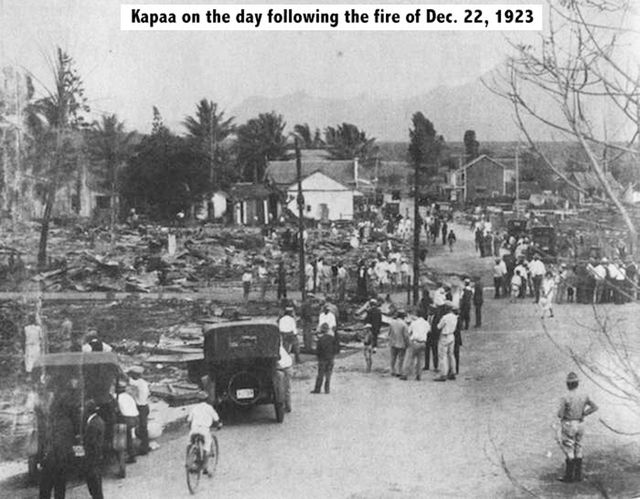At Kapaa, Hawaii, in September 1905, 10 Chinese merchants, being concerned about the risks of fire to their properties, began to employ two Chinese watchmen to keep a fire watch over their stores and houses between the hours of 9
At Kapaa, Hawaii, in September 1905, 10 Chinese merchants, being concerned about the risks of fire to their properties, began to employ two Chinese watchmen to keep a fire watch over their stores and houses between the hours of 9 p.m. and 5 a.m.
This was the time in which their shops were closed for business and they and their families would be asleep in their homes.
These watchmen divided the interval between 9 p.m. and 5 a.m. into two watches. One watchman was on duty from 9 p.m. to 1 a.m., when he was relieved by the second watchman, who carried on until the night’s fire watch ended at 5 a.m.
While on patrol, each watchman would strike a long bamboo pole every time he passed one of the merchants’ properties.
If the time was between 9 and 11 p.m., the bamboo would be struck twice; between 11 and 1, three strokes; between 1 and 3, four strokes, and between 3 and 5, five strokes.
In this way, the watchmen would indicate to those merchants who may have been awake that everything was safe, as well as the time, and that they were still on duty.
Yet, the sound produced by striking the bamboo was not so loud as to keep everybody awake.
Ironically, when a great fire actually occurred at Kapaa on Dec. 22, 1923 — a fire that leveled the heart of the town around and about today’s Huluili Street, destroying 25 homes and stores with estimated damages in excess of $75,000 — it started not among the Chinese merchants’ places of business, but in Sam Decker’s Los Angeles Store instead, at about 8:30 in the evening.
A passerby first discovered the blaze and sounded the alarm, but no water was available to fight it, so hastily assembled volunteers made firebreaks to contain it.
Several men used dynamite to demolish endangered buildings, while others chopped support beams with axes and pulled buildings down with ropes.
The fallen wreckage was then hauled out of the way of approaching fires, creating firebreaks in its place.


